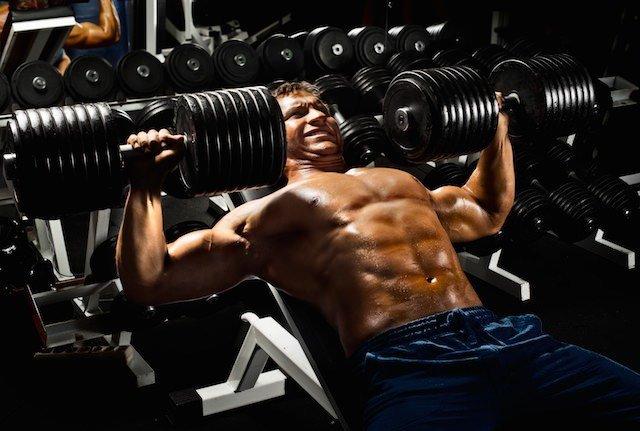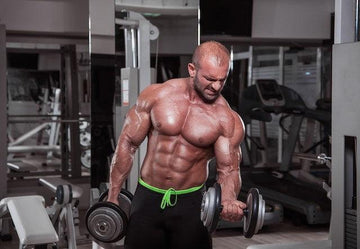

High Intensity Better than Volume for Muscle Gains
Table of Contents
High Intensity Better than Volume for Muscle Gains
by: Robbie Durand
If you pick up any fitness or muscle magazine, it will say something like this, “For muscle hypertrophy, perform 10-12 reps with 1 minute rest periods. For strength gains, perform 3-5 repetitions for maximal gains in strength.” If you look at real world training, some of the largest bodybuilders of our time such as Ronnie Coleman and Dorian Yates trained with heavy weight with very low repetitions, yet they developed an unbelievable amount of muscle mass. On the other hand, former Mr. Olympia Jay Cutler trained more with volume and reps. So can you still put on muscle while training with low reps? Is it better to train with high intensity such as Dorian Yates or train with high volume like Jay Cutler?
A study recently published in the Journal of the Federation of American Societies for Experimental Biology reports that high intensity is better than high volume for increasing lean muscle mass. Researchers split 29 resistance trained men into a hypertrophy group and a strength group.
-The hypertrophy group performed higher volume during sessions with 4 sets of 10-12RM with 1 minute rest periods.
-The strength group performed less volume with higher intensity with 4 sets of 3-5RM with 3 minute rest periods. .
Before and after the 8-week training program, muscle thickness of the vastus lateralis and rectus femoris muscles was evaluated. In addition, various hormones (e.g., testosterone, growth hormone, insulin, IGF-1 and cortisol) were measured at baseline, immediately post-exercise and again at 30 and 60 minutes post-workout. At the end of the study, some shocking results were found between the hormone responses between the high intensity and high volume group. High volume showed greater cortisol and GH responses following the hypertrophy training compared to high intensity however,

no differences between protocols were observed for either the IGF‐1 or testosterone response. Despite the lower IGF-1 levels in response to the strength training group, the strength group experienced significantly greater increases in lean body mass, leg mass, muscle thickness and cross-sectional area compared to baseline measures.

In the second part of the study, the researchers looked at intramuscular anabolic growth factors from the same group of men performing high volume and high intensity. When the researchers examined the muscle biopsies of the groups, high intensity exercise appeared to cause greater changes in markers of muscle damage (e.g., myoglobin and LDH concentrations- myoglobin and LDH concentrations have been used extensively as markers of muscle damage and may indicate the integrity of the muscle cell membrane), but greater changes in lactate concentration were observed following high volume exercise. So high intensity training induces more muscle damage (i.e., myoglobin and LDH concentrations), whereas greater changes in a metabolic marker of stress (i.e., lactate concentration) during high volume. Despite differences in markers of muscle damage between trials, intramuscular anabolic signaling did not appear to differ between the protocols. High intensity exercise appears to provide a significant stimulus for training induced muscle growth and lean mass gains in trained men. If you looking for consistent gains in muscle mass, you may want to try undulating periodization program which consists of both high intensity and high volume.
Gerald Mangine, Adam Gonzalez, Jeremy Townsend, Adam Wells, Adam Jajtner, David Fukuda, Maren Fragala, Jeffrey Stout, Nicholas Ratamess, and Jay Hoffman. Comparison of Training Intensity Versus Training Volume on Endocrine and Muscle Growth Changes in Trained Men. FASEB J April 2015 29:677.28.
Gonzalez AM, Hoffman JR, Townsend JR, Jajtner AR, Boone CH, Beyer KS, Baker
KM, Wells AJ, Mangine GT, Robinson EH 4th, Church DD, Oliveira LP, Willoughby DS,
Fukuda DH, Stout JR. Intramuscular anabolic signaling and endocrine response
following high volume and high intensity resistance exercise protocols in trained
men. Physiol Rep. 2015 Jul;3(7).
MUSCLE MEDIA MAGAZINE FOR MEN
The premier source of training, nutrition, supplements, fat loss and health for men.

















